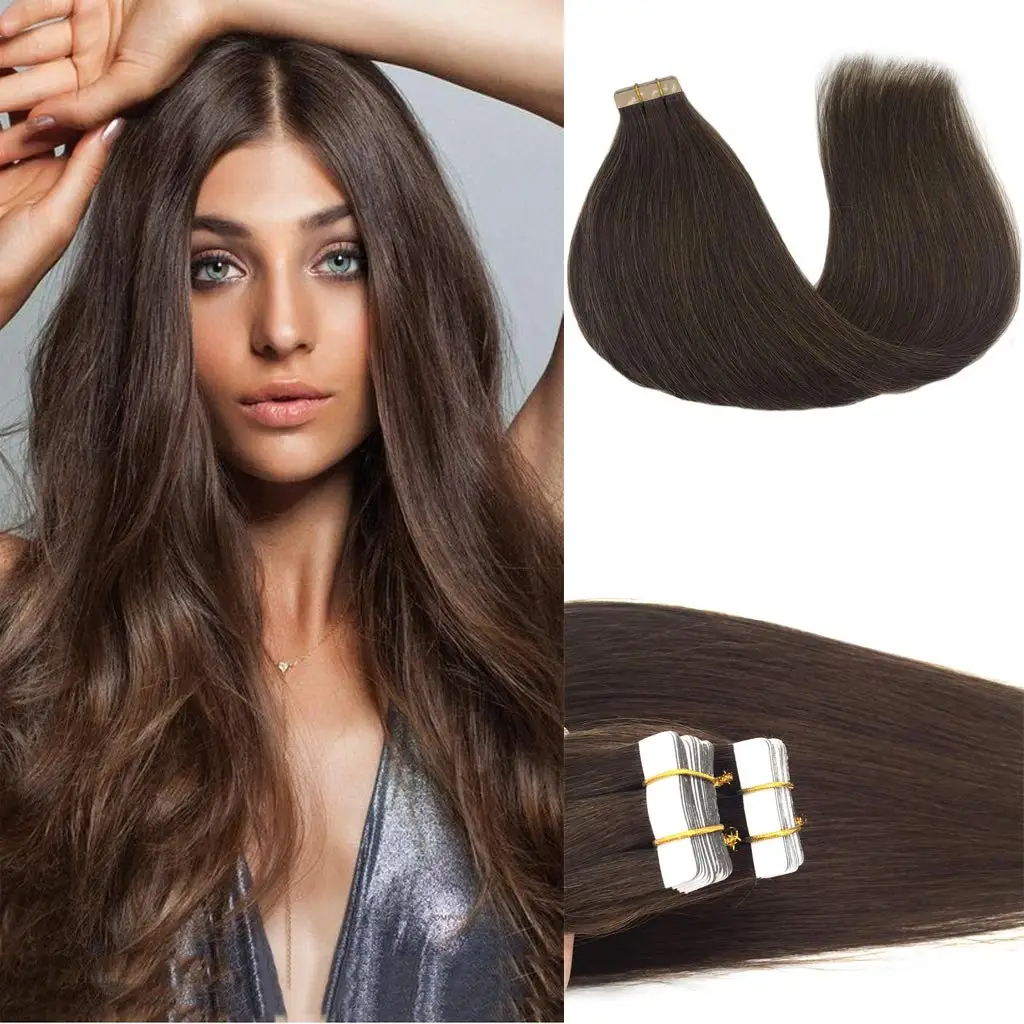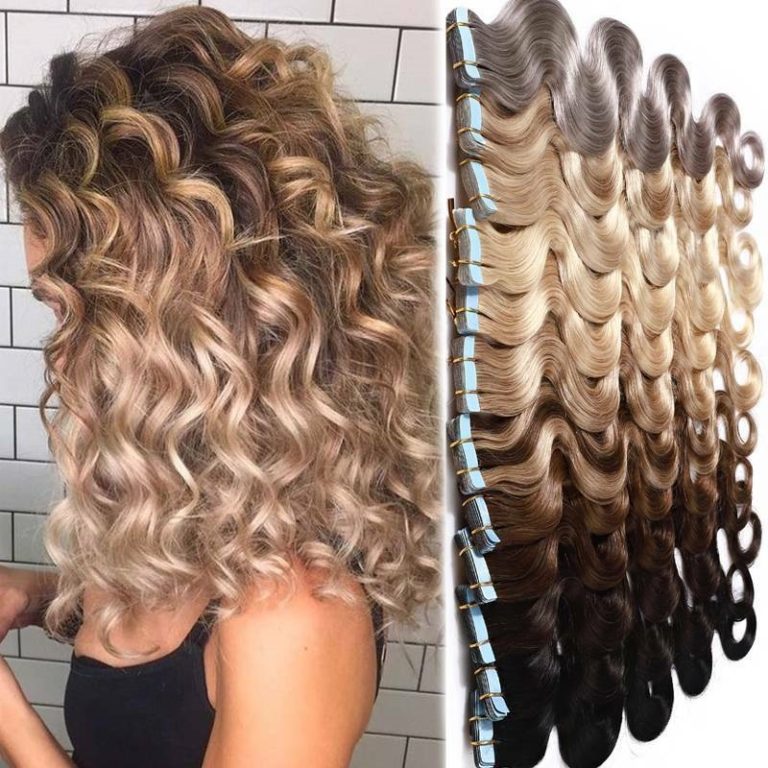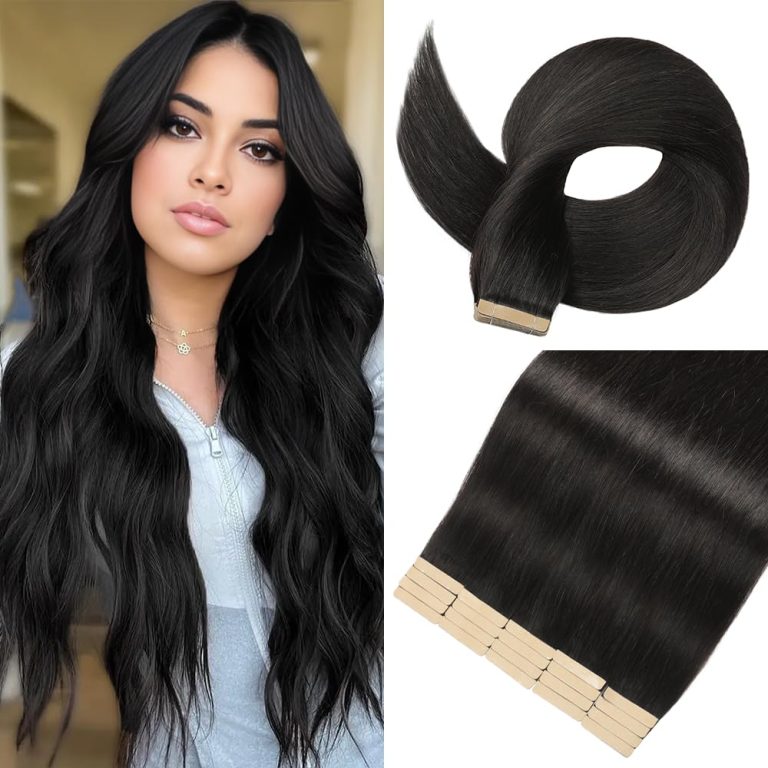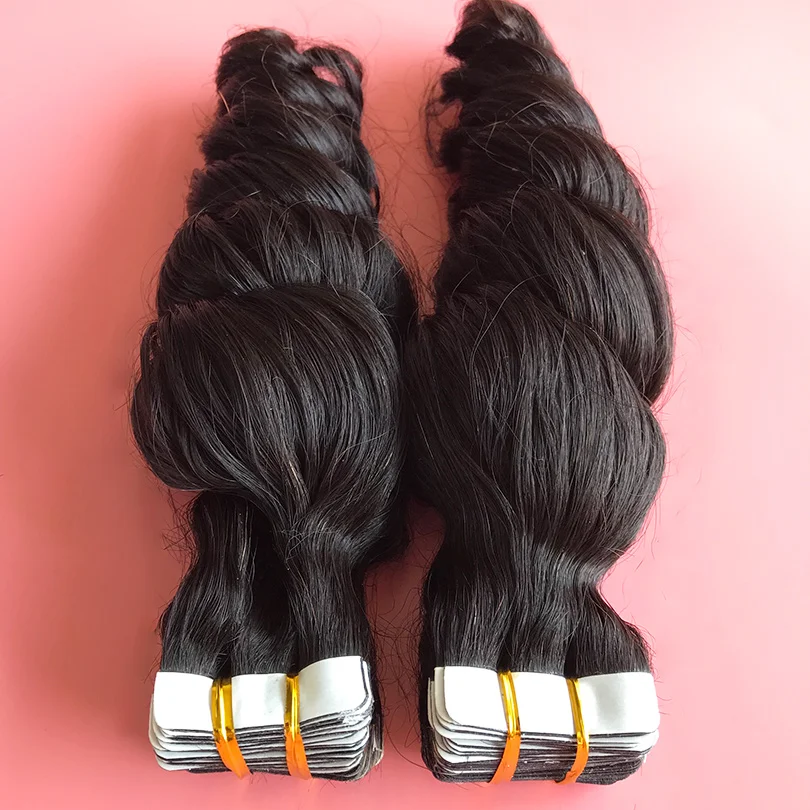
Do Tape In Extensions Damage Hair: The Risks and Benefits
Tape-in extensions have revolutionized the world of hair styling, offering a quick and effective way to add length and volume without the commitment of permanent solutions. However, a common concern among users remains: do tape in extensions damage hair? This comprehensive guide delves into the potential risks, benefits, and best practices associated with tape-in extensions, providing you with the knowledge to make informed decisions for your hair health.
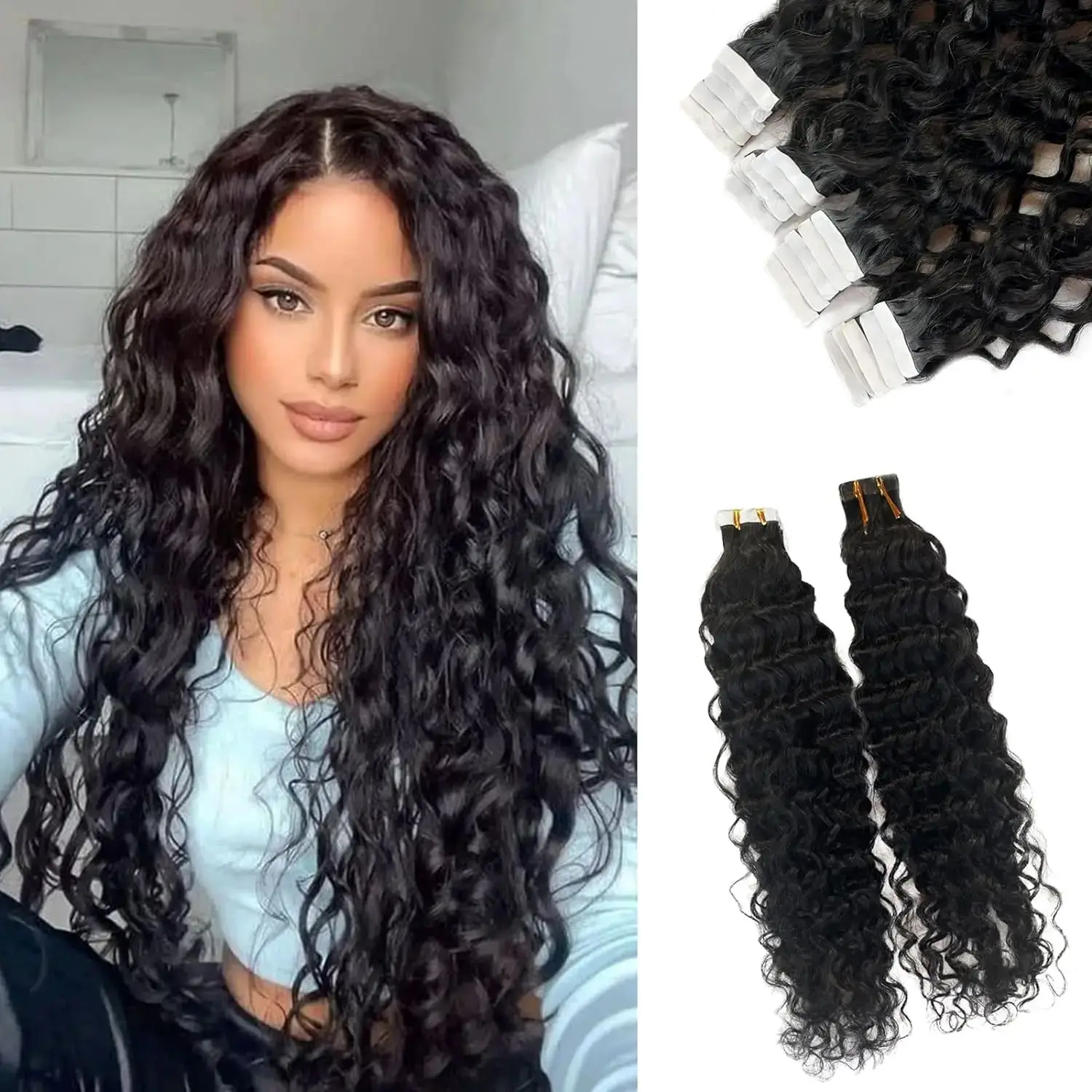 What Are Tape-In Hair Extensions?
What Are Tape-In Hair Extensions?
Overview of Tape-In Extensions
Tape-in extensions are a popular semi-permanent hair extension option. These extensions come with adhesive tape strips attached to their base. The adhesive allows them to stick to your natural hair securely. They are lightweight and designed to blend seamlessly with natural hair. Tape-in extensions offer a natural appearance when applied correctly. Typically, they can last for six to eight weeks before needing adjustments or reapplication.
How They Are Applied to Hair
Application of tape-in extensions involves attaching thin sections of extensions to your natural hair. The stylist selects small hair sections and sandwiches them between two adhesive extensions. Proper placement ensures they stay secure without harming your hair. The application process usually takes one to two hours. The bonds are flat and lightweight, making them comfortable to wear. Removal involves using a special solution to break down the adhesive safely. A professional stylist ensures minimal damage during both application and removal.
Benefits of Tape-In Extensions
Lightweight and Comfortable
Tape-in extensions are known for being lightweight, making them comfortable to wear daily. The thin adhesive strips lay flat against your scalp, reducing bulk. Unlike heavier extension types, they minimize tension on natural hair. This design keeps your scalp and roots from feeling weighed down. Many people forget they’re wearing them because of how light they are. Their lightweight nature also means fewer headaches or discomfort from extended wear.
Natural Appearance
One of the top reasons people love tape-in extensions is their natural look. The thin, flat design allows them to blend seamlessly with your natural hair. High-quality tape-ins mimic the texture, thickness, and shine of real hair. When applied correctly, they are almost undetectable to the naked eye. Their placement close to the scalp adds to their realistic appearance. You can style them as you would your natural hair, including curling, straightening, or tying into a ponytail, further enhancing their natural effect.
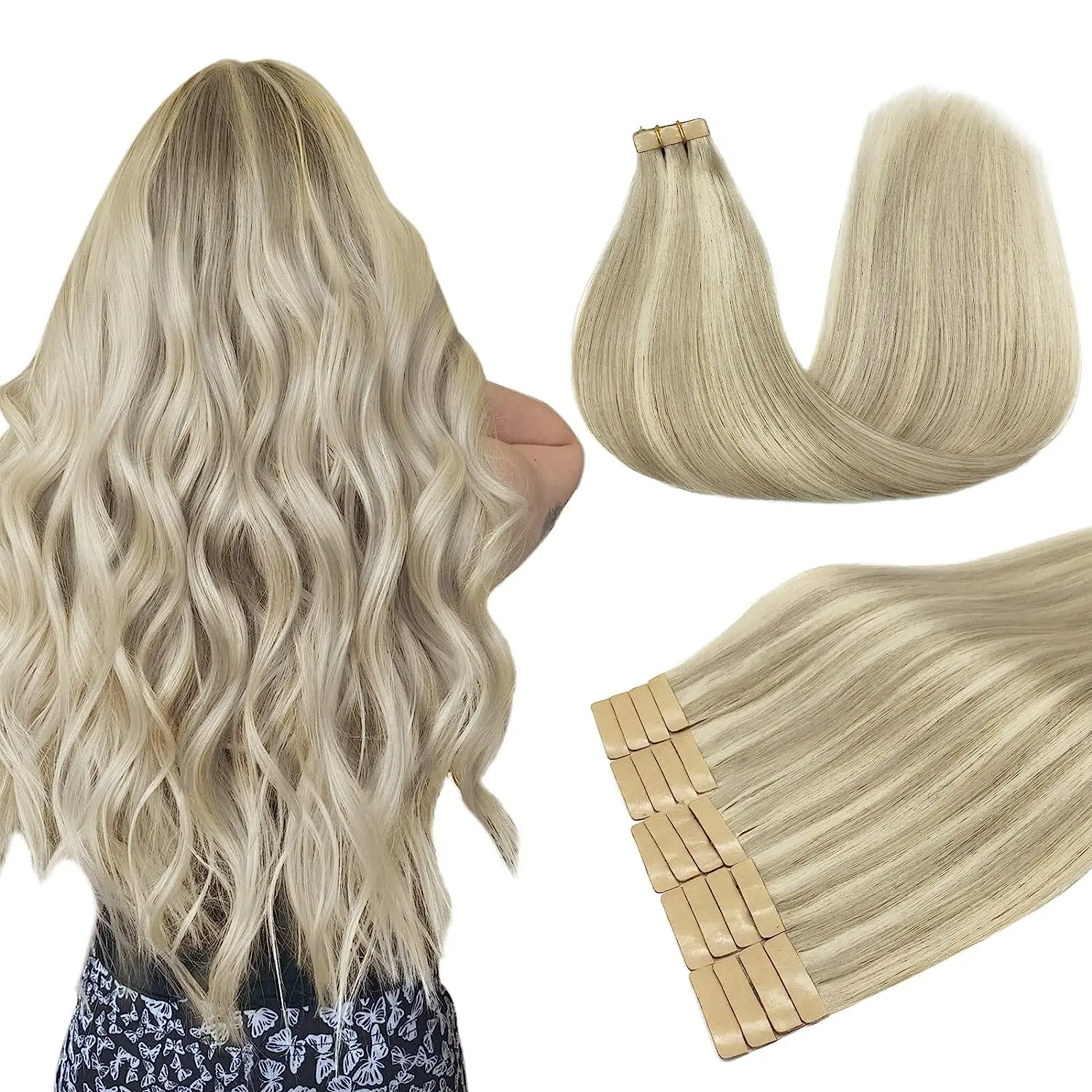 Common Concerns About Tape-In Extensions
Common Concerns About Tape-In Extensions
Are Tape-In Extensions Safe for Hair?
Tape-in extensions are generally safe when applied and removed correctly. Their lightweight design reduces stress on natural hair. Professional stylists follow techniques that protect your hair during the process. However, improper application can lead to issues. Over-tightening can pull on roots, causing discomfort or damage. Using the wrong products during removal may also harm hair. Always consult a trained stylist to ensure safety.
Potential Damage to Hair Follicles
Improper use of tape-in extensions may harm hair follicles. Applying extensions too close to the scalp causes tension. This stress can weaken the follicles and lead to breakage over time. Poor-quality adhesives or extensions may also damage hair. Additionally, failing to maintain extensions properly increases the risk of harm. Regular cleaning and gentle handling are essential to protect your hair. Always prioritize professional care and high-quality products to avoid follicle issues.
Factors That Might Lead to Hair Damage
Improper Application Techniques
Do tape in extensions damage hair? Improper application of tape-in extensions is one of the main causes of hair damage. Applying extensions too close to the scalp creates unnecessary tension. This tension strains hair follicles, leading to discomfort and potential breakage. Extensions that are not evenly distributed can pull on specific areas of hair, causing damage over time. Using untrained stylists increases the risk of improper application, so always choose a qualified professional.
Poor Quality of Extensions or Adhesive
Low-quality tape-in extensions are another risk factor for hair damage. Cheap extensions may use harsh adhesives or subpar materials. These can weaken natural hair and make removal difficult. Poor-quality adhesive can cause irritation or leave residue on your hair. Extensions made from synthetic fibers may not blend well, creating tangles that damage hair during detangling. Investing in high-quality, human hair extensions with safe adhesive is essential for minimizing risks.
Lack of Proper Maintenance
Neglecting maintenance routines can also lead to hair damage with tape-in extensions. Failing to clean and care for your extensions weakens the bonds and increases buildup. Using heavy or oily hair products may loosen the adhesive, causing extensions to slide and tangle. Not reapplying them on time strains your natural hair, leading to breakage. Sleeping with wet hair or pulling on extensions during brushing can also harm your hair. A proper aftercare routine, including cleaning, gentle detangling, and timely adjustments, is critical to prevent damage.
How to Minimize Hair Damage With Tape-In Extensions
Tape-in extensions can offer a natural look and versatility when applied safely. However, improper use may lead to damage. Following simple guidelines can help protect your hair.
Choosing a Professional Stylist
Hiring a qualified stylist is crucial for damage-free tape-in extensions. Professionals know how to apply extensions properly, reducing tension on the scalp. They use techniques that protect your hair from breakage. Experienced stylists also recommend safe adhesives and positioning methods. Avoid asking untrained individuals to install your extensions. Their lack of knowledge can risk pulling and hair damage. Check reviews and credentials before selecting a stylist.
Selecting High-Quality Extensions
High-quality tape-in extensions significantly lower the risk of hair damage. Premium options, made from human hair, blend smoothly with your natural strands. These extensions use gentle adhesives that won’t irritate your scalp. Cheap extensions with harsh adhesive may cause discomfort or damage during removal. Synthetic alternatives often tangle easily, leading to pulling or breakage. Invest in trusted brands and consult your stylist about the best choices for your hair type.
Following Maintenance Guidelines
Regular upkeep keeps your tape-in extensions secure and safeguards your hair. Clean them with mild shampoos and conditioners to prevent buildup. Heavy products loosen adhesives and cause tangling. Brush gently and avoid pulling on your extensions. Timely reapplication prevents strain on your natural hair. Protect your extensions by avoiding sleep with wet hair. Additionally, follow your stylist’s advice for aftercare routines. Proper maintenance is key to keeping your extensions damage-free.
The Role of Hair Care in Tape-In Extension Longevity
Tape-in extensions can last longer with the right care. Maintaining them requires gentle handling and proper techniques. Neglecting hair care can reduce their lifespan and create issues like tangling or adhesive failure. Following best practices helps you enjoy your extensions while keeping your natural hair healthy.
Importance of Gentle Hair Products
Using mild hair products is crucial for tape-in extensions. Harsh shampoos or conditioners can weaken adhesives. Choose sulfate-free shampoos and avoid heavy treatments that cause buildup. Lightweight, gentle products help clean extensions without disrupting the bonds. Avoid oily serums near the tapes to prevent sliding.
Moisturizing conditioners keep extensions soft and smooth. Dry extensions become brittle and prone to tangling. Apply conditioner from mid-length to ends and keep it away from the adhesive area. Rinse thoroughly to remove residue, which can weaken the bond.
Avoiding Heat Damage and Tension
Heat tools can harm both natural hair and extensions. Excessive heat may melt adhesive and damage strands. Reduce tool temperatures and apply a heat protectant before styling. Avoid using heat directly at the adhesive bonds to maintain their integrity.
Hair tension caused by tight styles can weaken extensions. Avoid pulling on extensions or tying your hair in tight ponytails. Hairstyles should distribute pressure evenly to protect the adhesive and natural hair. Sleep with loose hairstyles to prevent unnecessary tension overnight.
Alternatives to Tape-In Extensions
Tape-in extensions are popular, but they may not suit everyone. Fortunately, there are alternatives that offer different benefits for those seeking flexible and safe hair extension options. These alternatives cater to various preferences, budgets, and styling needs.
Clip-In Extensions
Clip-in extensions are a temporary solution for adding length and volume to your hair. They consist of wefts with small clips that easily attach to your natural hair. Here’s why they are a great choice:
- Ease of Use: Clip-ins can be applied in minutes without professional help.
- Non-Damaging: They don’t require adhesives and can be removed without harming your hair.
- Flexibility: Perfect for occasional use, such as special occasions or photoshoots.
- Affordability: Typically less expensive than semi-permanent extensions.
Clip-in extensions are ideal for individuals who want a quick and temporary hair enhancement without the commitment of tape-in extensions. Regular use requires careful handling to avoid breakage from frequent clipping and removing.
Sew-In Extensions
Sew-in extensions, also known as weaves, are another alternative. A stylist braids your natural hair tightly and then sews the extensions into the braids. Here’s what makes them stand out:
- Long-Lasting: Sew-ins typically last six to eight weeks with proper care.
- Durable: Suitable for active lifestyles and various hair types.
- Versatile: Enables different hairstyles without much worry about the extensions.
- Minimal Damage: When installed correctly, they don’t harm natural hair.
While sew-ins are a reliable and long-term option, they require professional application to avoid putting too much tension on the scalp. Regular maintenance and proper care ensure your natural hair stays healthy.
Both clip-in and sew-in alternatives provide unique benefits, giving you options for experimenting with extensions, even if tape-ins aren’t suitable for your hair type or lifestyle.
 Best Practices: How to Clean and Care for Tape-In Extensions
Best Practices: How to Clean and Care for Tape-In Extensions
Proper care and maintenance are essential to prolong the lifespan of tape-in extensions and ensure the health of your natural hair. Implementing these best practices can help you avoid common issues and enjoy the full benefits of your extensions.
Gentle Washing Techniques
When washing your hair with tape-in extensions, use lukewarm water and a gentle, sulfate-free shampoo. Massage the shampoo into your scalp lightly, avoiding vigorous scrubbing that can dislodge or damage the extensions. Rinse thoroughly to remove all shampoo residues, which can weaken the adhesive if left behind.
Effective Drying Methods
After washing, pat your hair dry with a soft towel instead of rubbing it vigorously. Allow your hair to air dry partially before using a blow dryer on a low heat setting. This reduces the stress on your hair and extensions, preventing unnecessary breakage and ensuring the extensions remain securely in place.
Regular Brushing and Styling
Use a wide-tooth comb or a brush specifically designed for extensions to detangle your hair gently. Start from the ends and work your way up to prevent tugging and breakage. When styling, avoid excessive pulling or tension on the extensions, and opt for heat-protectant sprays to safeguard against damage from styling tools.
Periodic Seeking Professional Help
Schedule regular appointments with your hairstylist for adjustments and maintenance. Professionals can reposition or replace tape-in extensions as needed, ensuring that your hair remains healthy and the extensions are properly aligned. Regular check-ups help identify and address any potential issues before they escalate.
Avoiding Overuse of Hair Products
Excessive use of styling products like gels, sprays
, and serums can build up on both your natural hair and tape-in extensions, potentially weakening the adhesive and causing residue. To maintain cleanliness and prevent buildup, use hair products sparingly and choose lightweight formulations that do not interfere with the extensions’ bond.
Sleeping Care: Protecting Extensions Overnight
Protect your tape-in extensions while sleeping to prevent tangling and damage. Use a silk or satin pillowcase to reduce friction, which can cause the extensions to become loose or tangled. Alternatively, you can loosely braid your hair or tie it in a gentle ponytail to keep the extensions in place and minimize movement.
Hydration and Nutrition: Supporting Overall Hair Health
Maintaining overall hair health through proper hydration and nutrition supports the longevity of your tape-in extensions. Drink plenty of water, consume a balanced diet rich in vitamins and minerals, and consider supplements like biotin or collagen to strengthen your natural hair from within. Healthy hair is less prone to breakage and damage, enhancing the effectiveness and durability of your extensions.
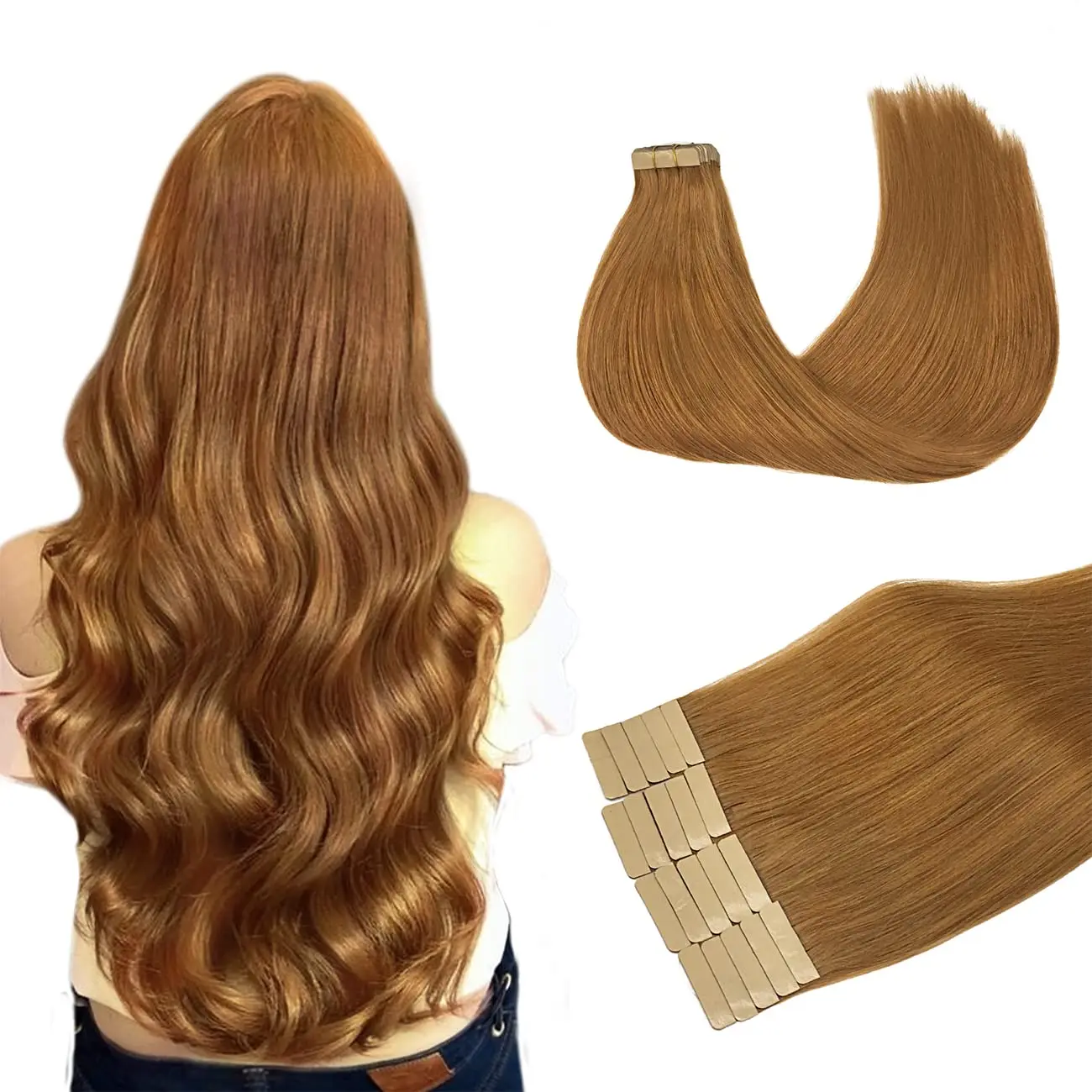 Addressing Potential Issues: What to Do If Extensions Cause Damage
Addressing Potential Issues: What to Do If Extensions Cause Damage
Despite following best practices, you might still encounter issues with tape-in extensions. Understanding how to address these problems promptly can prevent long-term damage and maintain the health of your hair.
Dealing with Headaches and Discomfort
If you experience headaches or discomfort from tape-in extensions, it could be due to excessive tension or incorrect placement. Visit your hairstylist to have the extensions adjusted or repositioned. Reducing the number of extensions or opting for a different attachment method can also alleviate discomfort and prevent further strain on your hair and scalp.
Managing Scalp Irritation and Allergic Reactions
Scalp irritation or allergic reactions may occur if you have sensitivities to the adhesive used in tape-in extensions. If you notice redness, itching, or swelling, remove the extensions immediately and consult a dermatologist. Switching to hypoallergenic adhesives or opting for extensions with different adhesive formulas can help prevent future reactions.
Addressing Hair Breakage and Thinning
If you observe increased hair breakage or thinning, it may indicate that the extensions are too heavy or not applied correctly. Reduce the number of extensions and ensure that your hairstylist uses a gentle application technique. Incorporate deep conditioning treatments and minimize the use of heat styling tools to support hair recovery and strength.
Fixing Loose or Shifting Extensions
Loose or shifting extensions can compromise the overall appearance and health of your hair. Schedule a visit to your hairstylist for a proper adjustment or reapplication of the extensions. Regular maintenance appointments are crucial for ensuring that the extensions remain securely attached and your hair maintains its integrity.
Conclusion: Are Tape-In Extensions Right for You?
The question of do tape in extensions damage hair is multifaceted, influenced by factors such as application quality, maintenance practices, and the health of your natural hair. While improper use and neglect can lead to damage, understanding how to clean bathroom sink, adopting best practices, and seeking professional help significantly reduce these risks. Tape-in extensions, when correctly applied and maintained, offer a safe and effective way to enhance your hair’s length and volume without causing harm. By prioritizing the health of your natural hair and following the guidelines outlined in this guide, you can enjoy the benefits of tape-in extensions while maintaining beautiful, healthy locks.
